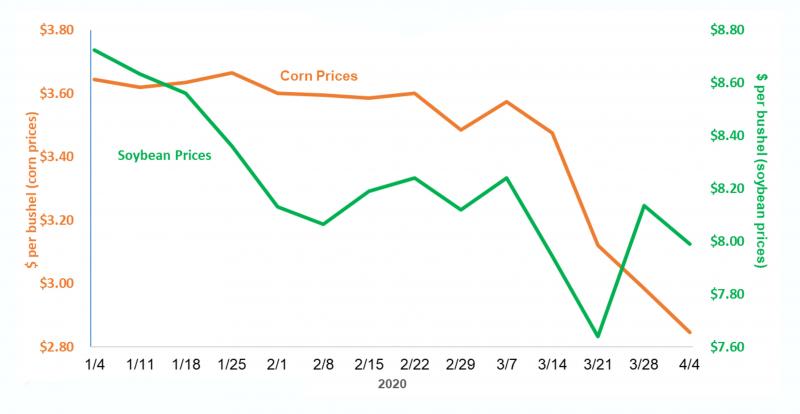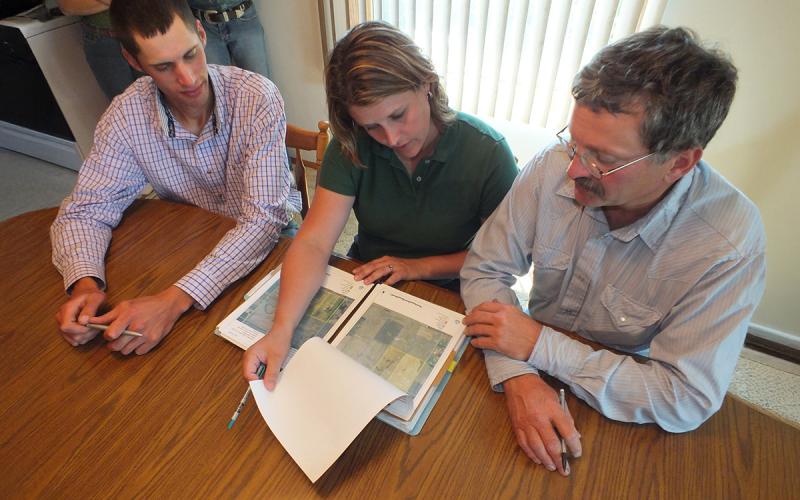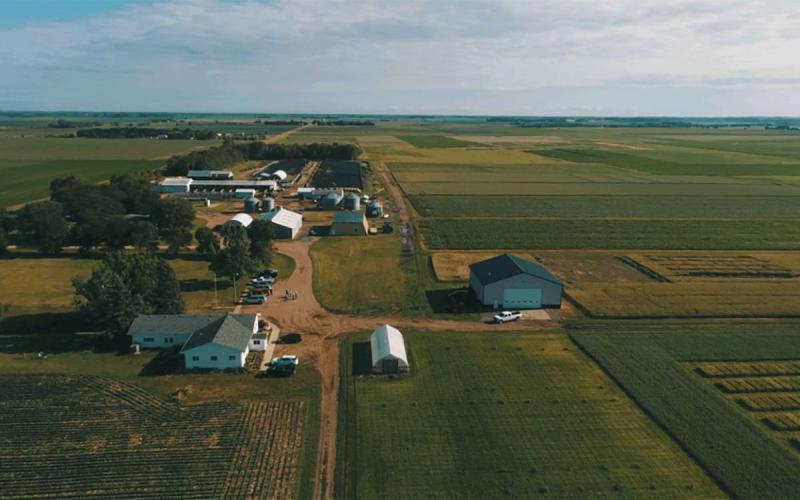
Written with contributions by Jack Davis, former SDSU Extension Crops Business Management Field Specialist.
Grain farming is facing a reduced income outlook for 2020. Unpriced old crop revenue has decreased and projected revenue for 2020 crop is reduced. Offsetting these decreases are chances that some input prices may fall, fuel related expenses and possibly higher payments from commodity title programs. The required control measures for COVID-19 has weakened the income outlook for farms.
There were already concerns about 2020 cash flows and income. In order to keep financial positions steady on most farms requires above trend yields and/or additional government aid. If the lower prices currently projected occur a combination of above trend yields, or additional government aid will be crucial to keep profits sufficient for most farms to avoid further financial weakening.
The effect of the control measures will influence old crop prices, payment levels for commodity title programs, crop insurance and prices for new crop, and changes in input prices.
Cash prices for corn and soybeans have fallen since virus control measures have been put in place (Figure 1). From January 2 through February 28, cash corn prices in east river South Dakota averaged $3.64 per bushel, (Agricultural Marketing Service, USDA). At the end of last week these corn prices averaged $3.20. From January and February levels, corn prices have declined 22% or $0.82 per bushel. Assuming 30% of the 2019 crop needs to priced, a $0.82 per bushel decline would reduce income by $35 per acre ($0.82 decline x 143 average 2019 corn yield in east river South Dakota x 30% to be priced).
Soybean prices averaged $8.34 per bushel from January 2 to February 28 in east river South Dakota. For the month of March and the week ending April 4, east river South Dakota soybean prices averaged $7.99 per bushel. From the January highs of $8.73 to April’s $7.99 is an 8% decline or $0.74 per bushel. Assuming that 30% of the soybean crop needs to be priced the $0.74 per bushel price decline would reduce income $9.62 per acre ($0.74 price drop x 44 bushel per acre yield in east river South Dakota x 30% to be priced).
Cash flow from the 2019 crop has been reduced. Pricing old crop in this situation presents challenges, for which there are no easy solutions.
Agricultural Risk Coverage (ARC) and Price Loss Coverage (PLC) programs could make larger payments for the 2019 production year as Market Year Average (MYA) prices are in the process of being determined. The 2019 commodity title payments will be made in October 2020.
The 2019 marketing year for corn runs from September 2019 through August 2020. In the April World Agricultural Supply and Demand Estimates (WASDE) report, the projected 2019 MYA price is $3.60. Decreasing MYA prices could result in higher ARC-CO payments for corn. Some counties in South Dakota had projected payments for 2020 based on NASS yield data and MYA at this time. More counties could have projected payments if MYA prices decline. Counties with yields above benchmark yields, price declines will not necessarily result in ARC-CO payments. Counties with low yields and a projected payment, a decrease in price will increase the payment fairly directly. This increase will continue up to the ten percent max payment, which equals approximately $35 through $70 per base acre in east river South Dakota.
Lower cash prices for the remainder of the year could result in the MYA price falling below the $3.70 reference price, possibly generating PLC payments for corn. There is a chance that this might occur. If national prices average $3.30 for the balance of the marketing year, the MYA price for 2019-20 year would average $3.60. A $3.60 MYA price would result in a $0.10 payment rate per PLC bushel yield. A farm with a PLC yield of 150 bushel per acre would have a $13 payment per base acre (85% x 150 PLC yield X $0.10 prospective payment rate). Base acres for a FSA farm will not be the same as planted acres.
There are counties in east river South Dakota projected to receive 2019 ARC-CO payments for soybeans. Counties with yields above the benchmark yield even with a price decline will not necessarily result in ARC-CO payments. For counties already with low projected yields and low payments a decrease in price will increase the payment directly. The increase will continue up to the ten percent maximum payment, which equals $30 to $60 per base acre in east river South Dakota.
The 2019 marketing year for soybeans is from September 2019 through August 2020. In the April WASDE report, the projected 2019-20 MYA price at $8.65 per bushel for soybeans. Prices would have to average around $7.65 per bushel nationally from March to August for the 2019-20 MYA price to equal $8.40. It is doubtful prices will fall far enough during the remaining months of the year to invoke payments.
Declines in MYA prices will increase the size of ARC-IC until the farm reaches the maximum ARC-IC payment level. Once over the maximum payments will not increase.
The next article in this 2-part series will look at crop insurance and new crop revenue, 2020 commodity title programs, and changes in input prices.
Cash flow and income prospects have shrunk for South Dakota farms because of the COVID-19 crisis. The decrease in prices will probably continue for 2020 crop revenues (see the SDSU Extension Net Income Tool to value your crop). Commodity title program payments could somewhat offset revenue declines, and some non-land costs may decrease. The expected price falloffs have greater effects than any increase in commodity title payments or decrease in input prices. A blend of above-trend yields and/or government aid is required to keep incomes at levels where financial weakening does not occur.
References
March 1, 2020 Grain Stocks Released March 31, 2020, by the National Agricultural Statistics Service (NASS), Agricultural Statistics Board, United States Department of Agriculture (USDA). Agriculture Marketing Service, USDA, Weekly East River South Dakota Grain Prices.

